Hosta Fortune Albopicta - Care Tips
The ornamental perennial Hosta Albopikta was bred in the 19th century and named after the Austrian botanist Hosta Nikolaus. This plant of the Asparagus family is prized for its high decorative effect, lush flowering and good disease resistance. Consider the characteristics of the variety, the rules of cultivation and reproduction.
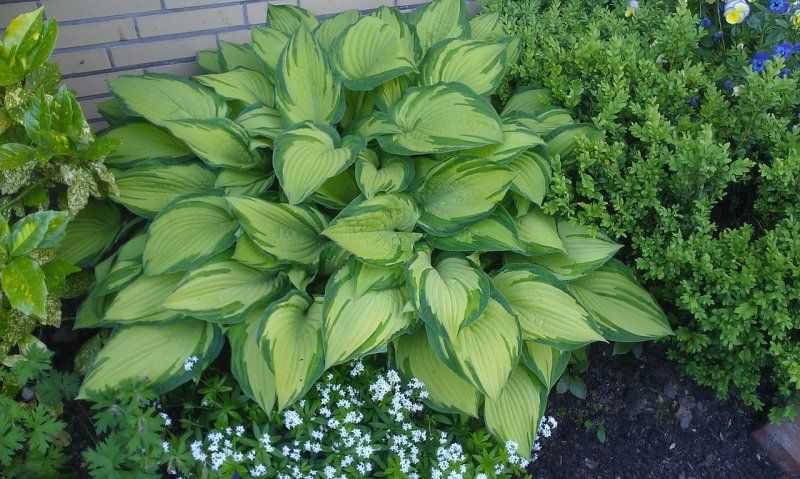
Hosta albopicta description
Description of the variety
Hosta fortunei Albopicta is a herbaceous perennial up to 40 to 70 cm high. The circumference is from 60 to 80 cm. The main advantages of the variety include fast growth, achieving maximum decorative effect in a couple of years, good frost resistance, and low light requirements.
The leaves are wavy with a glossy surface, yellow-green with emerald edging along the edge. Closer to autumn, the leaves acquire a uniform, pale green tone.
The plant blooms in July and fades at the end of August. Flowers in the form of bells, light purple, collected in inflorescences located on long stalks.
Landing features
If you provide all the necessary conditions - fertile soil, a suitable place in the garden and regular maintenance, the host will reward you with good health and a beautiful view.
The best time to plant seedlings is from the end of March to the first half of April. It is important that the process of blooming of vegetative buds does not begin, the soil has already warmed up well and the threat of recurrent frosts has passed.
Seat selection
Hosta prefers to grow in an area where there is access to sunlight during the morning and evening hours. In the sun, its foliage burns, in full shade it becomes pale, and the plant stops growing.
The culture is not demanding to the composition of the soil, but when planted on loams with a high humus content, it will show maximum decorative effect.
When grown on swampy ground, the bush can quickly rot and die. If the soil is poor, sprinkle it with humus, add sand or vermiculite.
Seedling preparation
The main success of growing a plant is the acquisition of high-quality and healthy planting material. A seedling can be purchased at a gardening store. When buying it, you should inspect the aboveground part and the root system - it is important that they do not have mechanical injuries and signs of disease.
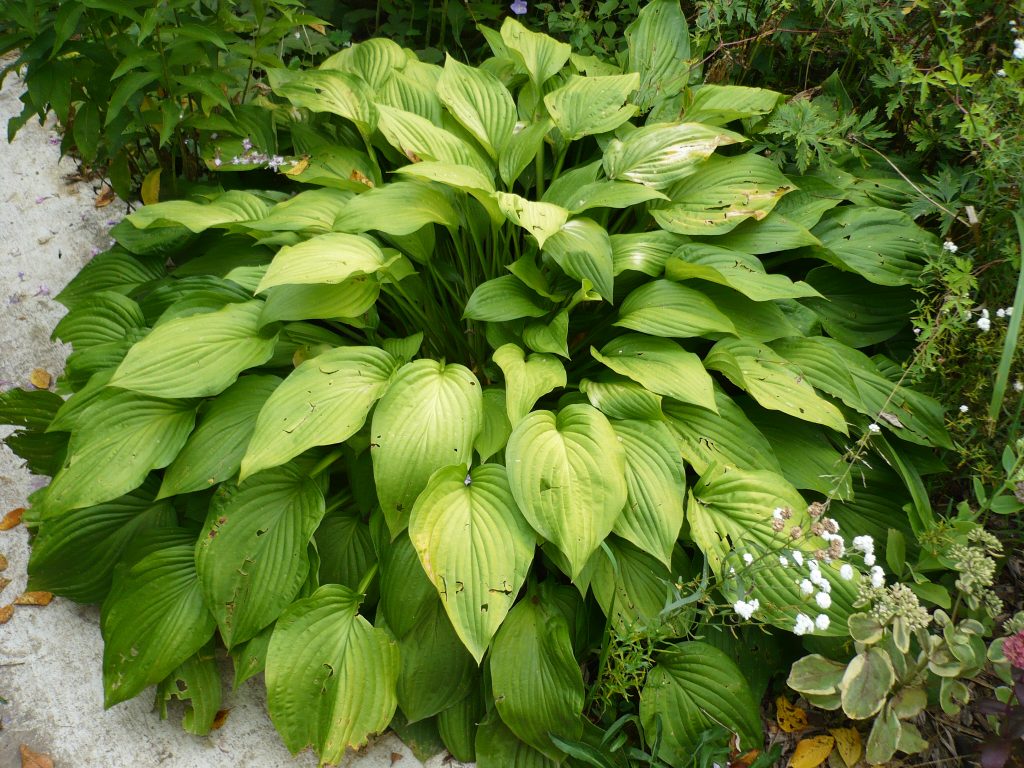
Hosta albopicta photo
Landing technique
The disembarkation is carried out in the following order:
- First, holes are dug up to a depth of 25 cm.Taking into account that the Albopicta host forms a superficial root system, the hole should be spacious - up to 50 cm wide.
- If planted on heavy clay soil, it is necessary to fill the bottom with a couple of handfuls of coarse sand or vermiculite.
- The hole is filled with a nutrient composition - 5 kg of garden soil are mixed with ammonium nitrate, superphosphate and potassium sulfate - 50 g of each component.
- The roots are lowered, sprinkled with soil so that there are no voids, trampled, watered. One seedling will require 3-4 liters of water.
- At the end, add mulch from peat or last year's manure.
When planting this perennial shrub, it is important that the root collar remains on the surface of the soil, otherwise it will begin to rot.
If you are planting several seedlings, you must maintain a distance between them - at least 80 cm.
Care requirements
With timely and proper care of the host, Albopicta will show maximum decorative effect.
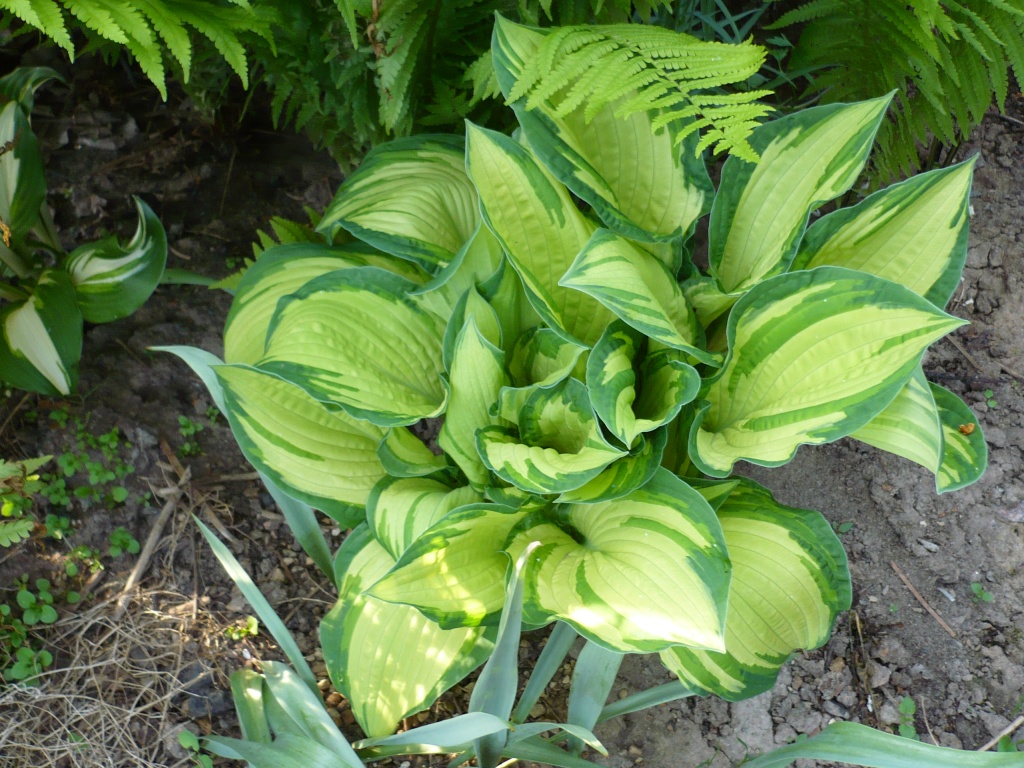
Host albopicta
Watering
Prefers high soil moisture, so it should not be allowed to dry out. In dry summers, the bush is moistened every three days. Pour 4-5 liters of water.
Closer to autumn, the frequency is reduced - to once a week.
Use warm and settled water to prevent hypothermia of the roots. In extreme heat and drought, the crown is irrigated. This procedure is performed in the evening to avoid burns. Spraying stimulates the growth of new leaves, prevents the appearance of parasites.
To keep the soil light and allow moisture to pass through well, oxygen, it is loosened after each watering.
In order to avoid infection with diseases and infections, it is necessary to keep the flower bed clean - regularly weed, remove weeds, plant debris.
Top dressing
When hostas are planted in fertile land, there is no need to apply fertilizers for the first three years. After this time, the trunk circle is sprinkled with organic matter in the form of compost, mowed grass, straw and peat. They are fed twice - in late spring and early autumn.
Adult specimens that have become worse blooming need to be fertilized with minerals. Use preparations containing nitrogen, phosphorus and potassium in equal amounts. They feed 3 times a season - until the buds swell, before flowering, after its end.
For quick assimilation of nutrient components, feeding is carried out together with watering.
Pruning
Throughout the entire period of growth and development, non-viable parts are removed - yellowed, dried and damaged leaves by pests.
When the plant blooms, cut off the dried inflorescences so that they do not take away strength and energy from the bush.
In the fall, 2 weeks before the upcoming cold weather, when all the foliage turns yellow, they carry out a cardinal pruning of the crown - to the very base.
Cut with a well-sharpened and sterile secateurs. This will prevent infection with diseases.
Preparing for winter
The plant does not need insulation, since after the shearing only the root system remains. But to preserve the nutrients in the soil, you can sprinkle it with a thick layer of leafy earth.
Reproduction
There are several ways of reproduction of an ornamental perennial - seed, vegetative and dividing the bush. In private gardening, the latter method is used, since the first two are laborious and do not always give a positive result.
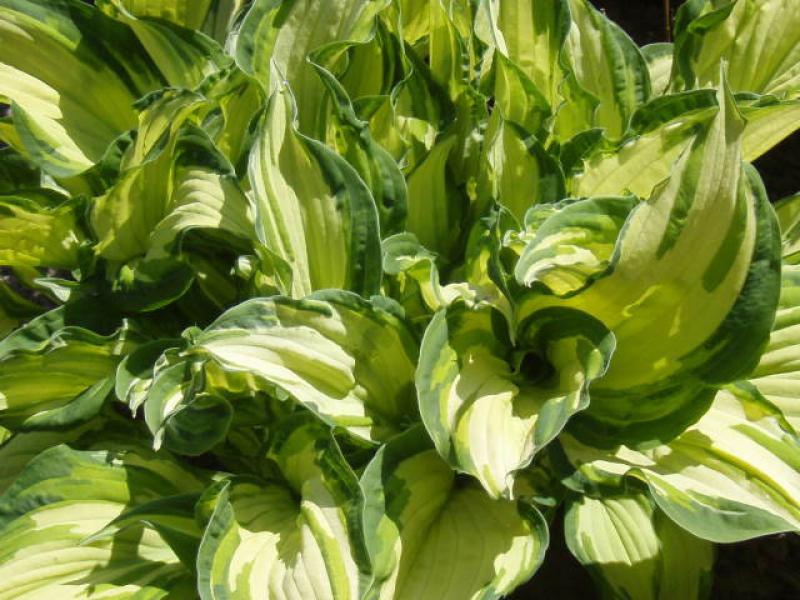
Hosta fortune albopict description
Breeding new seedlings consists of several stages:
- in the spring, the bush is watered abundantly, dug up and lowered into a container of water to wash off the remnants of the soil;
- the dried rhizome is divided into several parts with roots and at least one bud;
- the places of the cuts are treated with copper sulfate, then sprinkled with crushed coal;
- they are seated separately in planting holes according to the same principle as purchased seedlings.
Diseases and pests
If the host grows in a neglected area, does not receive the attention it deserves, it can be attacked by various parasites and infections.
Let's consider the possible problems in the table.
| Type of disease | Signs of defeat | Treatment methods |
| HVX Virus | The leaves become covered with yellow spots or dots, over time, the virus covers the entire surface. | The infected bushes need to be urgently dug up and burned. this disease is not subject to treatment. |
| Gray rot | You can identify this sore by brown or brown spots with a fluffy gray bloom on the foliage. Later, the rot spreads to the petioles and the entire crown perishes. | Special pesticides are used - 2% Azocene solution or Bordeaux liquid. |
| Rotting of the root collar | Begins in plants that are too deeply planted or suffer from frequent overflow. Hosta stops growing, becomes discolored and dies off. | At the initial stage of the lesion, the bush is dug up, all diseased parts are cut off. Places of cuts are irrigated with copper sulfate, dried, planted in fertile and sterile soil. |
| Rust | Reddish or light brown spots on the surface of foliage, petioles. | This disease quickly depletes the shrub and it dies. It is necessary to cut off all infected areas, treat the host with Ridomil Gold or Azocene. |
| Slugs and snails | They gnaw out the leaves, leave silvery stripes on their surface. | Beer traps, pesticides Thunderstorm or Slime-eater are used. Additionally, the soil between the bushes is sprinkled with wood ash, superphosphate or lime. |
| Caterpillars | Pests love to feast on leaves, leaving holes on them. | In the fight against them, insecticides are used - Actellik, Aktaru or Fundaz |
| Nematodes | They damage the root system, which no longer gains access to moisture and oxygen. The shrub quickly withers and withers away. | It is better to dig up the plant and burn it to prevent infestation of nearby growing bushes. |
Application in garden design
In the modern landscape of the host fortune, Albopicta is in great demand:
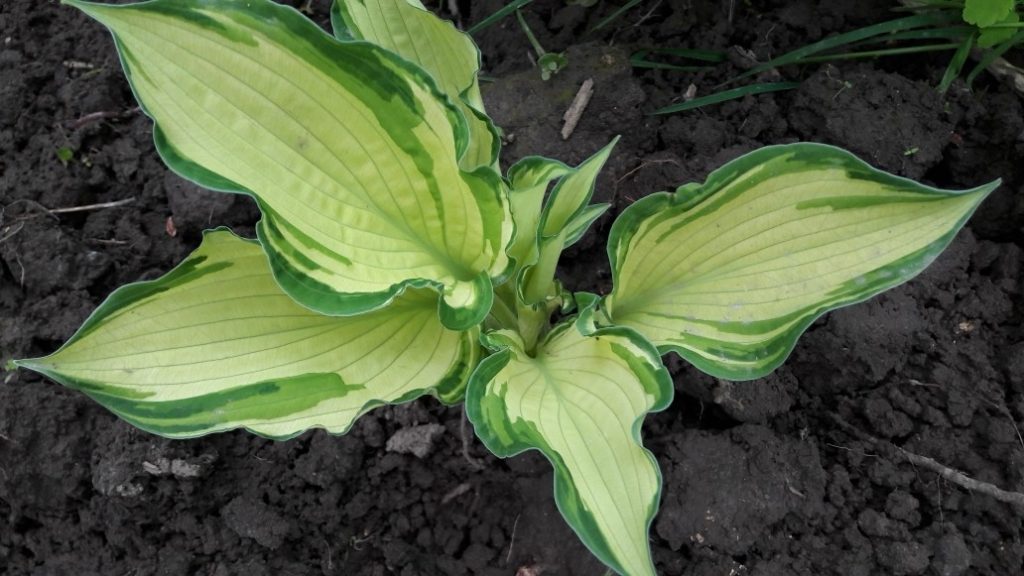
Hosta fortune albopict photo description
- it is used to decorate rock gardens, rockeries, mixborders;
- planted in flower beds, surrounded by undersized decorative flowering plants;
- combined with other host varieties;
- planted along alleys, curbs, near benches, gazebos and in the most inconspicuous corners of the garden.
Gardeners reviews
The unassuming and very colorful plant has received many positive reviews:
- does not need insulation, shaping pruning, which greatly facilitates maintenance;
- grows fully surrounded by other decorative cultures, therefore it is used in different compositions;
- with proper care and attention, it is rarely damaged by diseases and pests.

